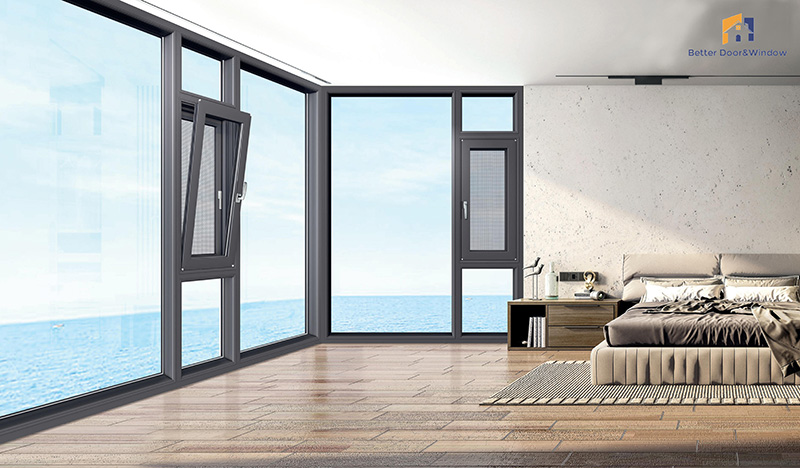· Fixed frame· Inward opening window· Outward opening window· Sliding window
When evaluating the environmental friendliness of broken bridge aluminum doors and windows and wooden doors and windows, we can compare them from multiple perspectives. The following is an analysis of the environmental friendliness of both:

Environmental Protection of Broken Bridge Aluminum Doors and Windows
1. Material Sustainability: The main material for broken bridge aluminum doors and windows is aluminum alloy. As a metal material, aluminum alloy has high recyclability and recyclability. The production and recycling process of aluminum has relatively low energy consumption, which is beneficial for reducing resource consumption and environmental impact.
2. Production process: Although the production process of broken bridge aluminum doors and windows does not involve direct consumption of a large amount of natural resources, it may involve energy consumption and certain environmental impacts. However, with the advancement of technology, the production process of broken bridge aluminum doors and windows is gradually developing towards a more environmentally friendly and efficient direction.
3. Thermal insulation and sound insulation performance: Broken bridge aluminum doors and windows adopt bridge breaking technology, which adds thermal insulation and sound insulation materials in the middle of the aluminum alloy profile, effectively isolating indoor and outdoor temperature and noise transmission. This performance helps to reduce the use of indoor air conditioning and heating, thereby reducing energy consumption.
4. Low VOC emissions: The coatings and adhesives used in the production process of broken bridge aluminum doors and windows are usually rigorously screened to reduce the emissions of volatile organic compounds (VOCs). This helps to improve indoor air quality and reduce potential impacts on human health.
Environmental friendliness of wooden doors and windows
1. Renewable resources: Wood, as a renewable resource, has natural advantages. Under reasonable logging, sustainable utilization of forest resources can be ensured. The growth cycle of wood is short, and using wood to make doors and windows can help reduce dependence on limited resources.
2. Low carbon emissions: Compared with metal and plastic doors and windows, the production process of wooden system doors and windows has lower carbon emissions. The large carbon storage capacity of wood helps to reduce the carbon dioxide content in the atmosphere and has a positive impact on mitigating global climate change.
3. Biodegradable: Wooden doors and windows can naturally degrade after their service life and will not cause pollution to the environment. This has significant environmental advantages compared to other building materials that require long-term degradation.
From an environmental perspective, both broken bridge aluminum doors and windows and wooden doors and windows have their own advantages. Broken bridge aluminum doors and windows have advantages in material sustainability and low VOC emissions, while wooden doors and windows are characterized by their renewability and biodegradability. When choosing, it is necessary to weigh the specific usage environment and needs. If pursuing higher insulation and sound insulation performance and lower energy consumption, broken bridge aluminum doors and windows may be a better choice; If we focus on the renewability and biodegradability of materials, wooden doors and windows are more suitable.